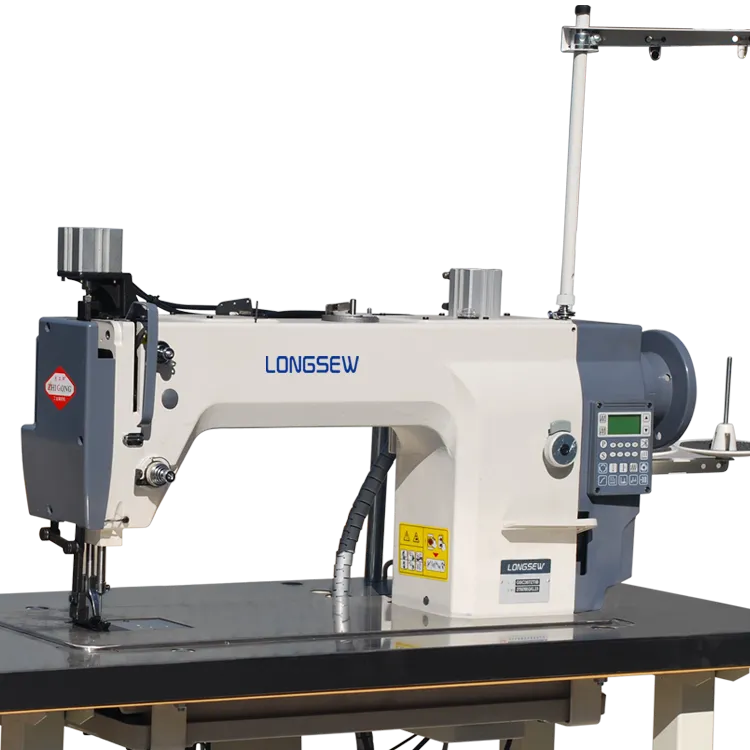Understanding the Basics of Lock Stitch in Sewing Techniques and Applications
What is a Lock Stitch?
A lock stitch is a fundamental type of stitch used in sewing that combines two threads one from the top and one from the bottom. It is defined by its characteristic formation, which allows for a secure, uniform join in fabrics. Lock stitches are primarily produced using sewing machines, but they can also be created by hand, albeit with more difficulty and less precision.
The Mechanics of Lock Stitch
In the lock stitch mechanism, a needle carries the upper thread down into the fabric layers while a bobbin (located below the sewing surface) provides the lower thread. As the needle passes through the fabric, it creates a loop with the upper thread. The lower thread from the bobbin then intertwines with this loop, forming a lock that secures the stitch. As the machine operates, the needle rises again, pulling the upper thread up as it does, resulting in a compact, flat stitch on the top of the fabric and usually a slightly different appearance on the underside.
This method of stitching results in a strong and durable seam that is less likely to unravel, making it ideal for various types of sewing projects, from garment making to quilting and general repairs. The lock stitch is widely favored for its neatness, consistency, and reliability.
Applications of Lock Stitch
Lock stitches are versatile in their application. They are primarily used in fashion and apparel manufacturing, home sewing, and upholstery work. The strength of the lock stitch is particularly advantageous in garments that undergo significant stress or stretching, such as activewear and fitted clothing. Additionally, the appearance of the lock stitch is appealing for visible seams in decorative sewing or topstitching.
what is a lock stitch

One of the most common types of machines that produce lock stitches is the sewing machine. Domestic sewing machines, industrial machines, and even some heavy-duty sewing machines use this stitch type as their standard method of constructing seams. While there are various stitch types used in sewing, the reliability and simplicity of the lock stitch make it a staple in both home and industrial settings.
Advantages of Lock Stitch
The lock stitch offers several benefits. Firstly, it creates a flat seam that is less bulky compared to other stitch types, making it ideal for lightweight and delicate fabrics. Secondly, the lock stitch tends to be more secure than certain alternatives, such as chain stitches, since it requires two threads to break in order for a seam to come undone. This quality is essential for garments that experience repetitive movement and wear.
Moreover, the lock stitch can easily be adjusted in terms of tension, length, and stitch width, providing versatility to the sewist for different sewing materials and projects. This ability to customize stitch characteristics is fundamental for achieving professional-looking results.
Challenges and Considerations
Despite its many advantages, the lock stitch also comes with challenges. It can be sensitive to thread tension; if the tension is too tight or too loose, it may result in puckering or a poor seam that doesn’t hold. Additionally, maintaining the sewing machine for optimal operation is crucial since issues such as thread jams or needle problems can disrupt the lock stitch formation.
In conclusion, the lock stitch is a crucial element in the world of sewing. Its ability to create strong, durable seams with a clean appearance makes it the go-to choice for many sewists and industry professionals alike. Understanding how the lock stitch works and its applications can enhance sewing skills and contribute to the quality of finished projects. Whether you are a beginner or an experienced sewist, mastering the lock stitch is essential for creating beautiful and lasting handmade items.
-
Industrial Cylinder Arm Sewing Machine: Revolutionizing Heavy-Duty SewingNewsJul.28,2025
-
Cylinder Arm Sewing Machine: Perfect for Special Sewing ApplicationsNewsJul.28,2025
-
Cylinder Bed Sewing Machine: Essential for Sewing Complex MaterialsNewsJul.28,2025
-
Heavy Duty Sewing Machine: The Essential Tool for Industrial ApplicationsNewsJul.28,2025
-
Computerized Pattern Sewing Machine: Revolutionizing Precision StitchingNewsJul.28,2025
-
Heavy Duty Industrial Sewing Machine: Power Meets PrecisionNewsJul.28,2025
-
Leather Sewing Machine: The Industrial Standard for Tough MaterialsNewsJul.18,2025





























